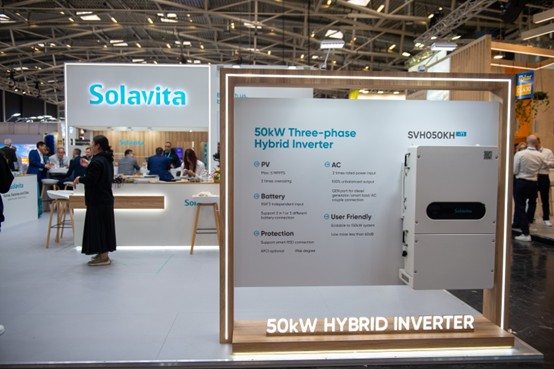Solavita has launched a three-phase hybrid inverter series with power overview from 29.9 kW to 50 kW, designed to meet the rising demand for C&I roof solar energy and large-scale residential energy systems. All inverters in the series meet 580 mm x 920 mm x 300 mm and weigh 93 kg.
Each unit supports a maximum of five Maximum Power Point Tracking (MPPT) inputs and makes a 200% PV-Om inverter crate possible, whereby the 50 KW model up to 100 kW of solar input accepts. The MPPT voltage varies from 180 V to 850 V, with a nominal DC voltage of 600 V and peak efficiency of 97.8%. Each MPPT entrance accepts up to 40 A, so that the output is even maximized in partially shaded conditions.
Battery integration is central to the design of the system. Each inverter comprises three independent high-voltage batteries with a value of 55 A each, for a total of 165 A. The system supports lithium ion batteries using 280 AH or 314 AH cells and makes “3-in-1” or completely independent configurations possible. Battery-to-AC-Efficiency achieves 97.5%, with PV-to-battery efficiency up to 98.5%.
The inverters treat the double of their nominal ac -entrance, with a maximum of 100 kW for the 50 kW model. They offer 1.5x overload for 30 seconds and 1.2x for 60 seconds. Units support 100% unbalanced taxes and 200 a continuous AC passage, with UPS switch under 10 ms. A gene gate makes diesel generator and smart charge integration possible.
The SVH series is IP66 rating for outdoor use and works in ambient temperatures from -30 C to 60 C. Built-in protections include anti-eising, surge protection, insulation monitoring and optional arch-fault detection. Communications include Wi-Fi, LAN, 4G and Bluetooth, with mobile app monitoring. The system supports the virtual power plant and demand response integration via OpenAdr.
The new inverters from Solavita combine high technical performance, grid intelligence and flexible design to support distributed energy systems that are confronted with growing decentralization and grid variability.
This content is protected by copyright and may not be reused. If you want to work with us and reuse part of our content, please contact: editors@pv-magazine.com.
Popular content


